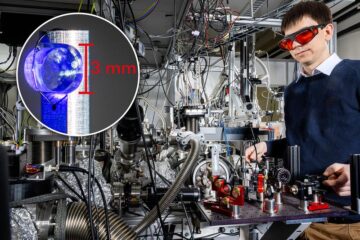Combining various magnetic resonance imaging techniques may help improve breast cancer detection

Researchers at Johns Hopkins say that combining various types of magnetic resonance (MR) imaging techniques more accurately sorts cancers from benign masses in breast tissues than any single imaging techniques. Their findings are presented in the October issue of Radiology.
Magnetic resonance imaging scanners can be calibrated to take images that highlight a specific type of human tissue. For example, so-called T1-weighted imaging sequences are best at imaging fatty tissues, while T2-weighted sequences best show fluids, like those found inside cysts. Additionally, 3-dimensional MR imaging can help define the size and shape of tumors. Contrast agents, dyes injected into patients prior to imaging to concentrate in the tumor and make it more visible, further enhance MR images similar to the way dye in water helps highlight the “veins” in celery stalks.
In their study, Hopkins researchers combined T1, T2 and 3-D imaging techniques, with and without contrast agents, on 36 subjects. Eighteen already had been diagnosed with benign breast lesions, and 18 with breast cancer. The researchers reviewed the results of the combined images without knowing which images came from which patient.
The combined, or multiparametric MRI technique, was able to identify and characterize breast lesion tissue clusters in all 36 patients, revealing which were benign and which were malignant. In addition, the multiparametric technique was even more powerful when used with contrast agents, providing more precise differentiation between the cancerous and non-cancerous tissue than the same images without contrast.
“Each individual imaging modality has its advantages,” says Michael Jacobs, Ph.D., the lead researcher for the study at the Hopkins Department of Radiology. “When all these techniques are combined into one data set, you can achieve an approach that shows the characteristics of a lesion not normally available using just one imaging technique.”
Jacobs notes that while his study appears to demonstrate the feasibility of using a combined imaging approach to identifying breast tumors, larger studies are needed to determine if the approach might be useful for studying the molecular dynamics of breast cancer tumors.
“It’s known that certain compounds, such as choline and sodium ions, tend to concentrate in cancer cells,” Jacobs says. “We are now investigating whether multiparametric MR imaging might be effective in imaging intracellular compounds within breast tumors. If so, this will enable a comprehensive assessment of the tumor environment.”
Media Contact
More Information:
http://www.hopkinsmedicine.orgAll latest news from the category: Health and Medicine
This subject area encompasses research and studies in the field of human medicine.
Among the wide-ranging list of topics covered here are anesthesiology, anatomy, surgery, human genetics, hygiene and environmental medicine, internal medicine, neurology, pharmacology, physiology, urology and dental medicine.
Newest articles

Biomarkers identified for successful treatment of bone marrow tumours
CAR T cell therapy has proven effective in treating various haematological cancers. However, not all patients respond equally well to treatment. In a recent clinical study, researchers from the University…

She deciphers how tomato roots communicate
Ora Hazak has always been fascinated by plants and is studying the signals that roots send to the rest of the organism. She aims to understand this communication in order…

Laser excitation of a nucleus
A long-awaited breakthrough opens the door to a new type of atomic clock and the investigation of fundamental questions in physics. After decades of investigation, researchers made an extraordinary quantum…





















